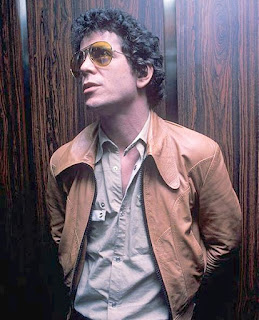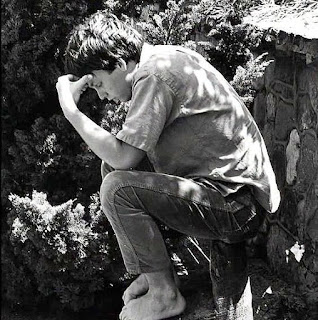“The linkage of musical passage and unreason is a philosophical commonplace… of course music speaks through mere sensations without concepts, and hence does not, like poetry, leave behind something for reflection, yet it moves the mind in more manifold ways and, though only temporarily, in deeper ways…” —Immanuel Kant, Critique of the Power of Judgement
Baby Driver (2017) is a heist and dark-comedy hybrid, as well as a musical thriller written and directed by Edgar Wright (Shaun of the Dead, Scott Pilgrim vs. the World), featuring a baby-faced antihero whose insouciant attitude vaguely echoes James Dean for the millenial generation. Baby (Ansel Elgort) is an outcast prodigy who keeps the rhythm at the wheel—even during an impossible car chase or after a botched bank robbery—all the while strategically synchronizing oldies from his iPod. The soundtrack serves not only to underline the emotions that the main characters (Baby’s partners in crime) want to communicate in certain key scenes—the songs add further momentum just like in classic musical movies.
The eclectic track selection mixes the frantic action scenes and the romance subplot with the melodies of The Jon Spencer Blues Explosion, Beck, T. Rex, The Detroit Emeralds, Martha & The Vandellas, R.E.M., Queen, Barry White, Simon & Garfunkel, etc.
A very precious moment is the introduction of Debora (Lily James) while The Beach Boys’ tune Let’s Go Away For Awhile resonates inside the diner—that instant brings out the nostalgia factor, which will prove to be crucial for the resolution of the story. Debora is a charming young waitress who shares with Baby her dreams of escaping into another world, by etching in his mind the ‘open road’ leitmotif as a 1950’s retro postcard.
Throughout the film, Baby seems to be trapped in Doc’s criminal enterprise in order to pay off an old debt. Doc (Kevin Spacey) is a calculating mastermind who doesn’t ever hire the same gang twice for his planned heists, but feels a special bond with the inscrutable Baby. Spacey gives a menacingly laconic performance, reminiscent of his manipulative manager John Williamson in Glengarry Glen Ross (1992). Despite Doc and Baby’s power imbalance, Doc persistently courts the ultracool chauffeur’s respect and friendship. Buddy and Darling (played by Jon Hamm and Eiza González) are a romantic couple of crooks plagued with an addiction to sex, drugs, and luxury. Their constant displays of trashy affection and sympathy towards Baby’s plight (tinnitus or ‘hum in the drum’ due to a childhood car accident) turn them into sort of his surrogate parents for a while.
Edgar Wright’s major influences in Baby Driver are Richard Sarafian’s Vanishing Point (1971), Walter Hill’s The Driver (1978), and Quentin Tarantino’s blend of pop culture references angled towards bursts of violence. The central ingenious gimmick in Wright’s story, however, hinges on an underlying commentary of how most of us periodically file in our memory a meaningful song of our choice to drown out the reality’s adversities. Debora lost her mother and now aspires to “head west on 20 in a car I can’t afford, with a plan I don’t have, just me, my music, and the road.”
Related to this aspect of taking refuge in nostalgic music as a means of survival, Sounding the Virtual: Gilles Deleuze and the Theory and Philosophy of Music (2010) expounds: “All musicians have always proceeded by drawing their own diagonal, however fragile, outside coordinates and localizable connections, in order to float a mutant sound block down a liberated line. In order to unleash, in space, a haecceity.” This understated philosophy, sprinkled underneath the choreography of spectacular getaways and flippant non-sequitur jokes, makes Baby Driver trascend the ‘fun summer blockbuster’ label.
Not quite so obvious as the intermittent allusions to Tarantino (Reservoir Dogs, True Romance), Walter Hill (Streets of Fire), Michael Mann (Heat) or Nicolas Winding Refn (Drive), but equally powerful is the absurdist undertone that connects Wright’s film to Vanishing Point (a post-Woodstock road movie influenced conceptually by Kerouac’s mythical On the Road). In addition to this context, Baby Driver (1981) is a novel written by Jack Kerouac’s daughter Jan Kerouac, and although her narrative style is often gloomy (opposite to Wright’s sunny touch), both stories share similar strokes of hopeful obstinacy.
Also, there is a parallel with the love interest instigating mutual desertion of an oppressive past. In the Baby Driver novel: “I was despairing over my star-crossed affair with Paul. The desire to get out and see him filled my spirit, leaving rom for nothing else. Paul brought me a red chiffon nightie with black lace to cheer me up. I wore it around that night, lost in imageries of my own, tiptoeing through the halls with a faraway look on my face.”
In Wright’s film, Debora, a flawed underachiever girl, is seen in Baby’s eyes as an angel who will be waiting for him forever. “I got all the time in the world,” she assures him. Baby’s childish magnetism seduces the sexy Debora, especially in the diner and laundromat scenes. Their romance is indeed ‘love at first sight… and sound,’ having Baby found a woman who—like his aspiring singer dead mother—will love him unconditionally. To Ansel Elgort’s credit, he can look detached and warm at once, being capable of fleshing out an old-school antihero without unnecessary mocking gestures or a sense of false superiority.
The erotic tension between Elgort and James is sincere and palpable, despite of their innocent stares and kisses. Indeed, the film would have benefitted from developing Debora’s persona a little more, since Lily James creates such a delightful character. Maybe Wright wants us to remember her just like an angel, standing before a gleaming classic convertible, a white 1954 Cadillac Eldorado.
Article published previously as Movie Review: ‘Baby Driver’ Strikes the Right Notes on Blogcritics.
The erotic tension between Elgort and James is sincere and palpable, despite of their innocent stares and kisses. Indeed, the film would have benefitted from developing Debora’s persona a little more, since Lily James creates such a delightful character. Maybe Wright wants us to remember her just like an angel, standing before a gleaming classic convertible, a white 1954 Cadillac Eldorado.
Article published previously as Movie Review: ‘Baby Driver’ Strikes the Right Notes on Blogcritics.































































